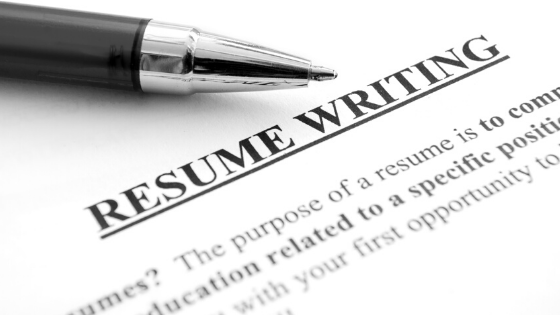Your resume is one of the most important components of your job application package. How can you make it stand out from the competition and catch the attention of a typical recruiter who is wading through scores of resumes? How can it boost your probability of getting hired for the job you are applying for? Here’s how to make it more likely that your resume will get noticed.
1. Choose the Best Resume Type. There are several types of resumes you can use to apply for job openings. Depending on your current personal circumstances, you can choose to write a chronological, functional, combination of the two, infographic, or a targeted resume.
Chronological Resume
A chronological resume starts by listing your work history, with the most recent position listed first. Employers typically prefer this type of resume because it’s easy to see what positions you have held, when you have worked at them and how you have progressed in your career. This is the most common type of resume that works well for job seekers with a strong, solid work history.
Functional Resume
A functional resume highlights your skills, experience, responsibilities and achievements. Instead of having a “work history” section at the top of your resume, you might have a “professional experience” or “accomplishments” section that lists various skills you have gained through the years of your employment.
Functional resume is used most often by people who are changing careers or who have gaps in their employment history. It is also useful for people who are new to the workforce, or have limited work experience.
Combination Resume
A combination resume is a mix between a chronological resume and a functional resume. With this type of resume, you can highlight the skills you have that are relevant to the job you are applying for, as well as provide your chronological work history. This kind of resume helps you highlight what makes you the best fit for the job, while still giving the recruiter all the information he or she wants.
Infographic Resume
An infographic resume uses graphic design elements such as layout, color, icons, and font styling to organize content. It works not only for graphic designers and illustrators, but also for any type of professional.
Infographic resumes have become immensely popular in the last few years. You might think that infographic resumes are strictly the terrain of graphic designers and illustrators looking to stand out from the competition, but the truth is that it can work for any type of professional.
Targeted Resume
A targeted resume is customized to specifically highlight the experience and skills you have that are tailored-fit to the job you are applying for. It takes more work to write a targeted resume, but it’s well worth the effort, especially when applying for jobs that are a perfect match for your experience and credentials.
2. Give Emphasis to Your Accomplishments with the Use of Power Verbs
When describing your previous work experiences, emphasize how you have solved problems and added value to the company.
Begin phrases with keywords like “mentored”, “increased”, “initiated”, “collaborated”, “resolved”, and “improved”; these power verbs go beyond simply stating your duties to emphasize how you produced results.
Most organizations value leadership and teamwork. When writing descriptions of your previous jobs, try to include examples of how each job required you to demonstrate these skills.
3. Highlight Your Awards and Recognition
Demonstrating that your peers and superiors value your contributions to the company often has a greater impact than you tooting your own horn. Include a category heading for Honors & Awards received and include formal recognition for significant projects.
4. Keep resume simple, legible and consistent. A simple format is easier for the hiring managers to read and the applicant tracking system (ATS) to screen. You can use legible fonts such as Times New Roman, Arial, or Calibri. Be sure to use a font size that’s readable – 10 to 12 points work best. Use bold and italics to highlight job titles and employers. If one job title is in bold, all job titles need to be bolded. Make sure all your small formatting choices are consistent from top to bottom.
A resume shouldn’t be several pages long for first time job seekers, a one-page resume would suffice, or two pages at most. A new college graduate will not have the same resume as an experienced employee. For applicants who have previous work experiences, their resumes should only contain the latest and greatest jobs, and only two or three will suffice. The standard resume length is one page, but do not feel limited to that requirement. If you have years of relevant industry experience, you will want to use two full pages. You can even use three if you have over a decade of experience and are looking for a high-level executive position.
Avoid dense blocks of text and use standard margins. Use white or cream-colored paper if you are sending a physical resume; colored paper can be very distracting.
5, Carefully Edit and Check Your Resume. Spelling and grammar errors can make an applicant seem inattentive to details. Proofread your resume to ensure that it is complete, consistent and error-free. If you can, find someone else to look at it too, because it is so easy to miss your own typos.
Boost your job search and your chance of getting hired. Impressing the recruiter is the first step to getting your foot in the door of your preferred company, so it’s essential to put effort into your resume.
